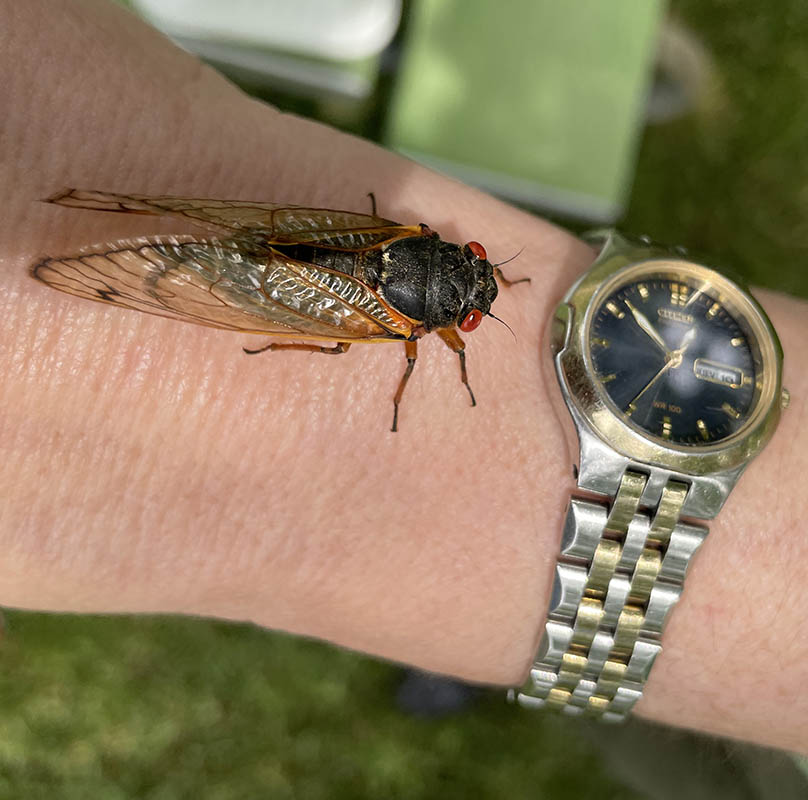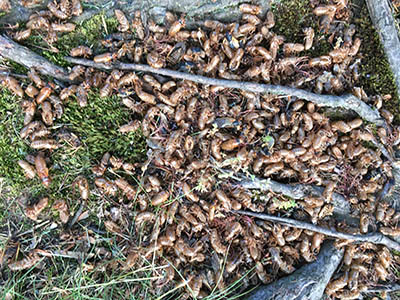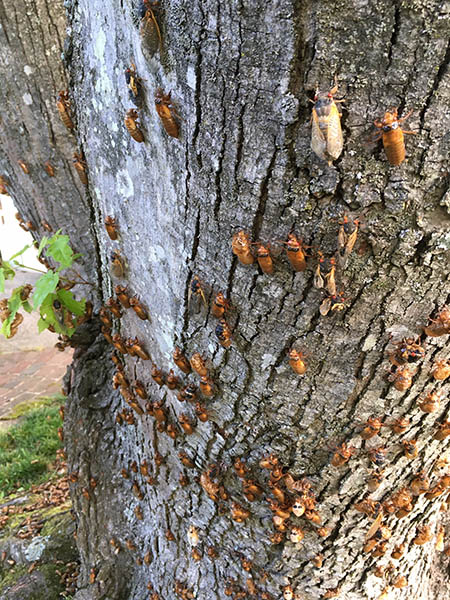Photographic Moment
Cicada Time

CREDIT: GEOFF CARTER
In the spring, millions of 17-year cicada emerged full force on the NIH campus in Bethesda, Maryland. This one seems to be checking the time.
The cicadas have been growing underground for 17 years, feeding on the sap in tree roots. When they climb out of the ground, they head to the nearest trees or anything resembling them (fence posts, signs, recycling bins, etc.) to do their final molt. They leave behind their shells—these are littering the base of one of the trees on the NIH campus—and climb the trees. The male cicadas begin singing their hearts out to attract a mate. With millions of the little critters singing in unison—by rapidly vibrating a section of their abdomen called a tymbal—the sound is deafening and as loud as a jet taking off or a motorcycle roaring down the street (about 100 decibels). The females flick their wings to summon the males. This action goes on all day for four to six weeks. The females lay eggs inside little incisions they make on tree branches. The adult cicadas die and the eggs will hatch in four to six weeks. The tiny nymphs fall to the ground and burrow into the soil where they’ll live and grow for another 17 years.

CREDIT: BILL BRANSON
Cicada shells, or exoskeletons, litter the ground at the base of a tree.

CREDIT: BILL BRANSON
The adult cicadas climb trees to begin their mating rituals.
This page was last updated on Thursday, February 3, 2022
